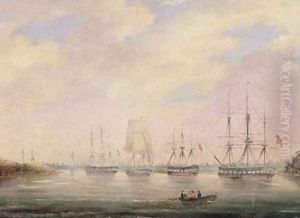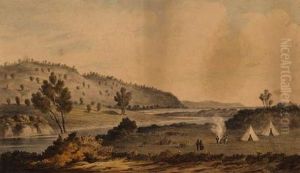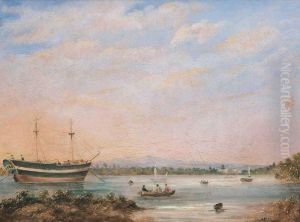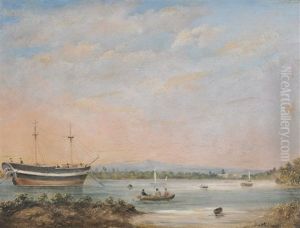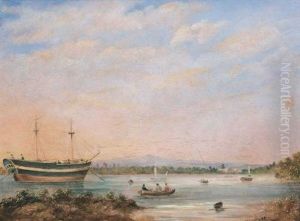Colonel William Light Paintings
Colonel William Light was not primarily known as an artist, but rather as the first Surveyor-General of the British colony of South Australia. He was born on April 27, 1786, in Kuala Kedah, Malaya, to Captain Francis Light, the founder of the British colony in Penang, and Martina Rozells, who was of Portuguese or French and Siamese descent. Despite his more famous contributions to urban planning and exploration, Light also had a keen interest in art, which was not uncommon for educated individuals of his time, particularly those involved in military and naval expeditions, where sketching landscapes and new territories was often necessary.
Light's early life was marked by extensive travel and exposure to military campaigns, which took him across various parts of the globe. His education included time at Theberton Hall in Suffolk, England, and he later joined the Royal Navy before transferring to the army, where he served in the Peninsular War under Wellington. His military career was distinguished, but it was his role in the establishment of Adelaide, South Australia, that cemented his place in history. As Surveyor-General, Light was responsible for choosing the site of the colony's capital in 1836. He designed the city layout using a grid pattern interspersed with squares and surrounded by parklands, a design that is celebrated to this day for its foresight and functionality.
In addition to his surveying and military work, Light's artistic side is evidenced through the sketches and maps he produced during his explorations. These works are valuable historical documents that also showcase his skill and eye for detail. Although not a professional artist, his contributions to art lie in these practical applications of his talents, providing insight into early colonial Australian landscapes and urban planning concepts.
Colonel William Light's health declined in his later years, and he died of tuberculosis on October 6, 1839, in Adelaide. He was deeply mourned by the settlers of South Australia, and his legacy is commemorated by the Light Memorial on Montefiore Hill in Adelaide, which offers views of the city he designed. Light's life and work encompass the fields of military service, exploration, and urban planning, but his artistic contributions, though lesser known, remain an integral part of understanding the multifaceted nature of this pioneering figure in Australian history.
